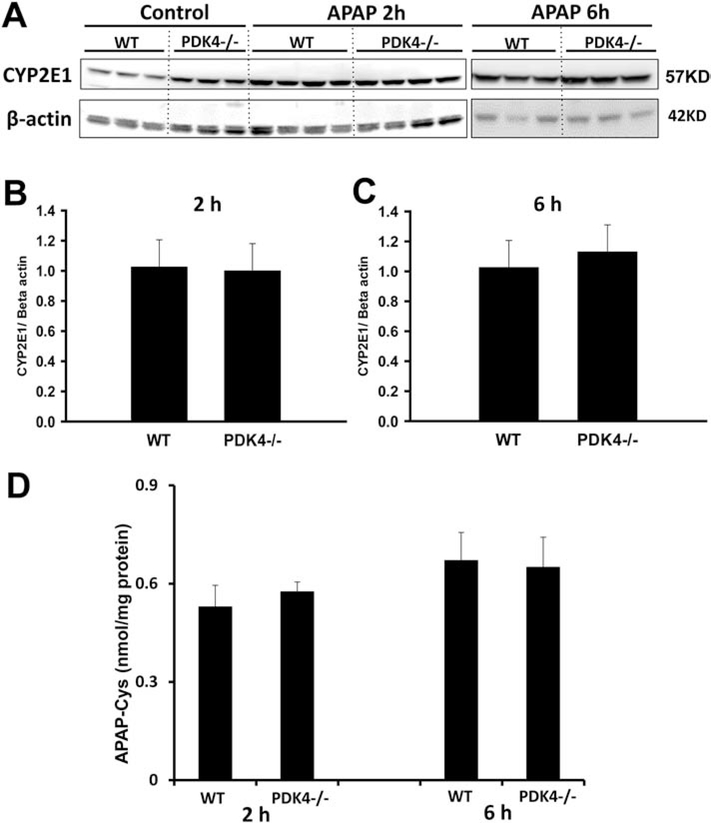Figure 6:
PDK4 deficiency did not affect APAP metabolism. Female wild type and PDK4−/− mice were treated with 600 mg/kg APAP or saline (control). Liver tissues were obtained from controls and 2 and 6 h post APAP. (A) Liver homogenates were subjected to western blotting for cyp2E1 and beta-actin. Densitometry was performed on the 2 h (B) and 6 h (C) samples and the cyp2E1–to-beta actin ratios were calculated. (D) APAP–cysteine adducts were measured by HPLC-ED in liver homogenate at 2 and 6 h post-APAP. Data represent means ± SE of n = 4–6 animals per group. *p < 0.05 (compared to controls, t = 0). #p < 0.05 (compared to the respective APAP group).

